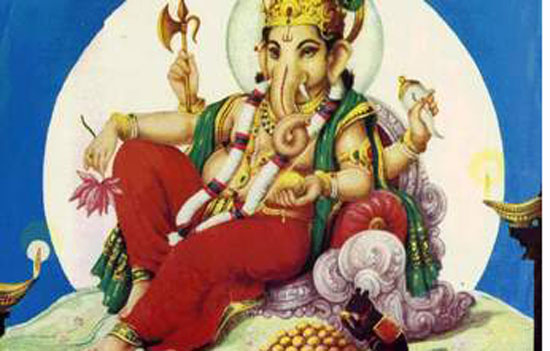Ganesha: A symbol of Power & Prudence
( 9035 बार पढ़ी गयी)
Published on : 05 Sep, 17 20:09
 Ganesha is the name of the God of wisdom, son of Lord Shiva and Goddess Parvati. Ganesha is worshipped as any other God in Hindu mythology and popularly known as Vighnharta, the Lord of remover of all obstacles. Ganesha is considered to be the Lord of letters and learning. Ganesha teaches us to avoid ego and arrogance. Without wisdom power is ruthless. Ganesha gives the wisdom to deal every problem with calmness and peace. Among all Gods, Ganesha was chosen to be worshipped first. It was his love for his parents that he won the hearts of all Deities.
Ganesha is the name of the God of wisdom, son of Lord Shiva and Goddess Parvati. Ganesha is worshipped as any other God in Hindu mythology and popularly known as Vighnharta, the Lord of remover of all obstacles. Ganesha is considered to be the Lord of letters and learning. Ganesha teaches us to avoid ego and arrogance. Without wisdom power is ruthless. Ganesha gives the wisdom to deal every problem with calmness and peace. Among all Gods, Ganesha was chosen to be worshipped first. It was his love for his parents that he won the hearts of all Deities. We bring him home with the promise to be like him. In this modern world, children must learn to respect their parents. Ganesha is the true example of this. Aggression kills peace and wisdom, Ganesha controls the evil inside us and motivates us to fulfil any promise with great courage.
Ganapati, being the most popular deity in India who is worshipped on many religious and secular occasions by all castes of Hindus, Jains & Buddhists.
We celebrate Ganesh Chaturthi every year with enthusiasm and zeal. Its a ten 10 day festival. On the first day Ganpati Bappa has been brought in homes or in well decorated public pandals. Ganpati is welcomed with sweets and other food items. Ganesha idols are preferably made of clay. Families decorate a small, clean portion of the house with flowers and other colourful items before installing the idol. Modaks, Laddus, coconut, jaggery, durva (green grass), red flowers mainly hibiscus are offered to Lord Ganesha. Mostly people keep Ganpati for 11/2,3,5, 7 or 11 days.
There are four main rituals during the festival - Pranapratishhtha - the process of infusing the deity into a murti or idol, Shhodashopachara - 16 forms of paying tribute to Ganesha, Uttarpuja - Puja after which the idol could be shifted after its infusion, Ganpati Visarjan - immersion of the Idol in the river.
The festival was celebrated as a public event since the time of Maratha King Shivaji, but publically Ganesha idol was installed first by Bhausaheb Laxman Javale.
Lokmanya Bal Gangadhar Tilak changed the festival from a private celebration to a grand public event "to bridge the gap between Brahmins and non-Brahmins in British Era. The purpose was to show the strength of Hindus to the British.
The immersion of statues take place on the 10th day. In a grand procession every year Ganpati idols are being dissolved in sea or river water. It is believed that after this immersion Ganpati returns to Kailash parvat where Lord Shiva and Maa Parvati lives with family. Dissolution of these statues are the most important part of the ceremony.
From past few years idols made from plaster of Paris are banned. Due to pollution many people prefer clay statues and dissolve small Ganpati idols in pots filled with holy water. Sea water and rivers are polluted by the chemicals which is being used to make these statues. Sea and water animals get effected easily because these statues dont dissolve in water. It is not good to make plastic statues. Plastic or any other material is harmful and its not being worshipped by ancient Hindus. We must avoid any harmful material to make these statues.
The significance of the festival is to start new beginnings in families. Ganesha comes every year and takes away all our obstacles, grief with him and spreads happiness everywhere. It is upto us to worship the symbol of Power and prudence
With respect and honour. We must not be disrespectful to other religions while celebrating this festival. Indian festivals are famous for integrity and freternity.
Today is the day on which Ganesha is going back to his family. Lets all pray together for the peace and prosperity of our country.
साभार :
© CopyRight Pressnote.in | A Avid Web Solutions Venture.






